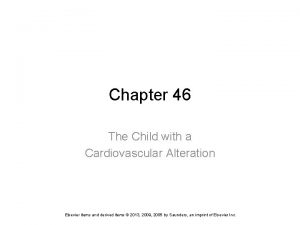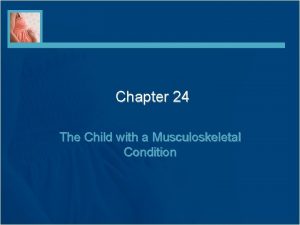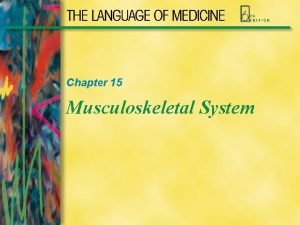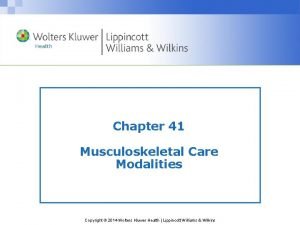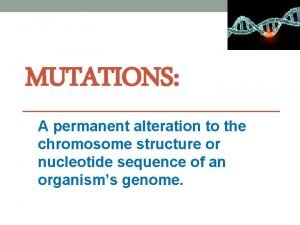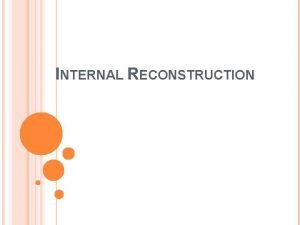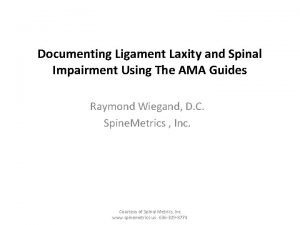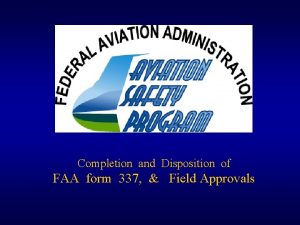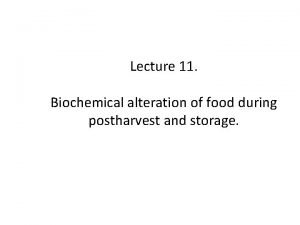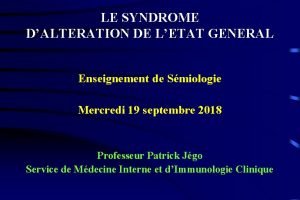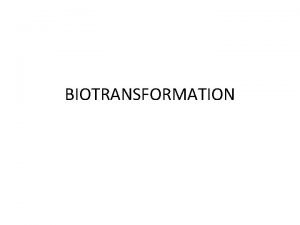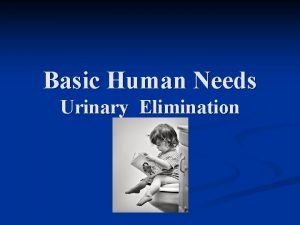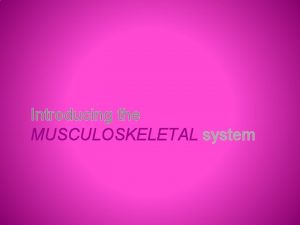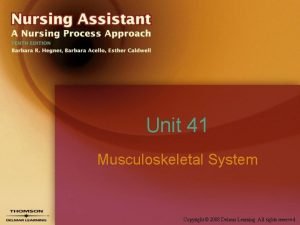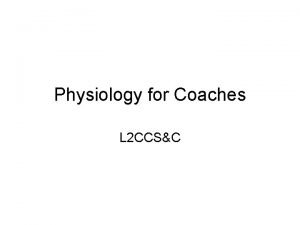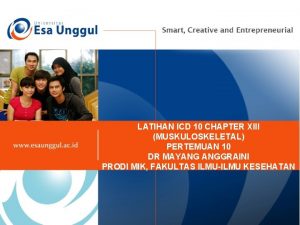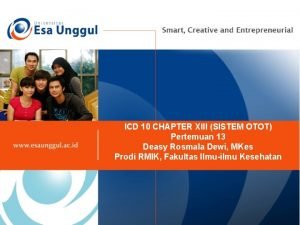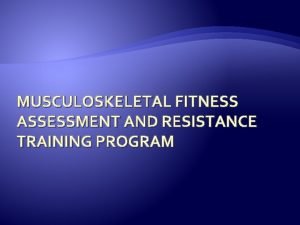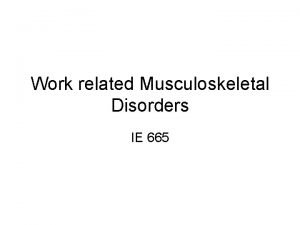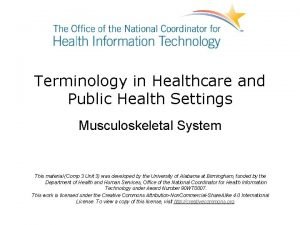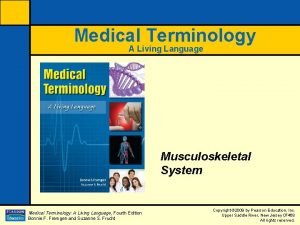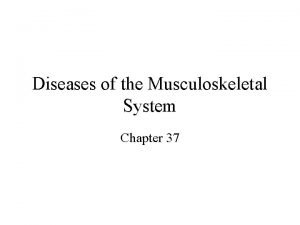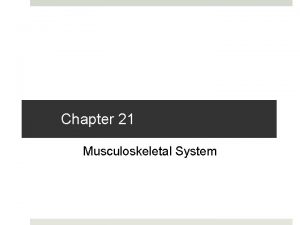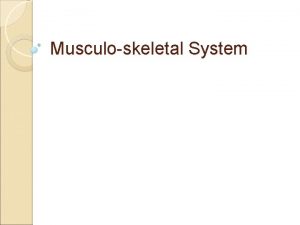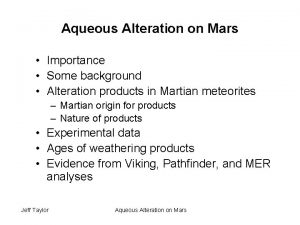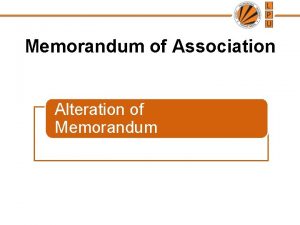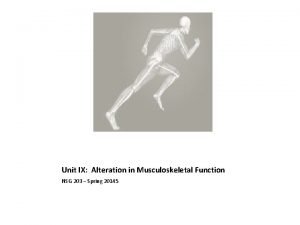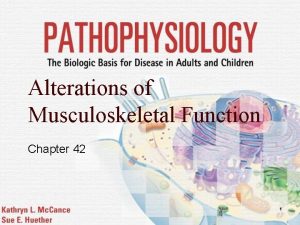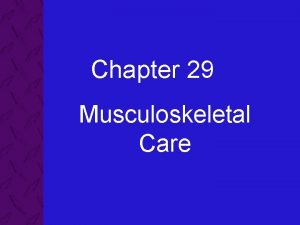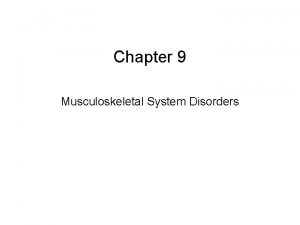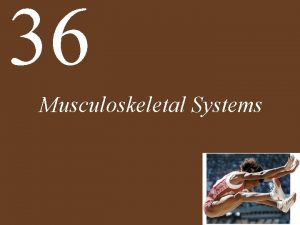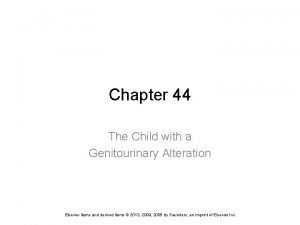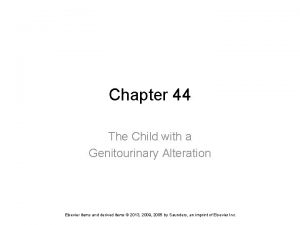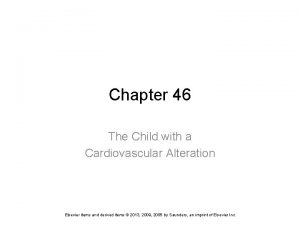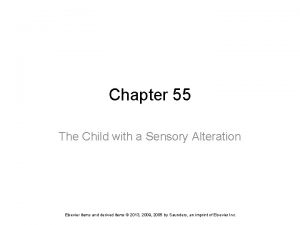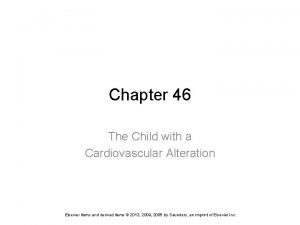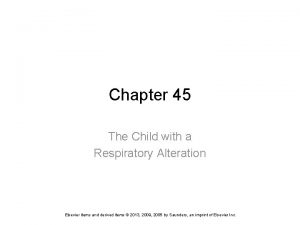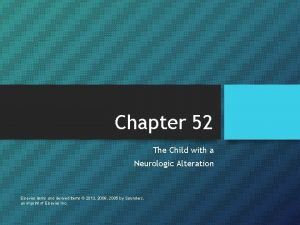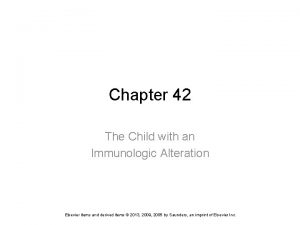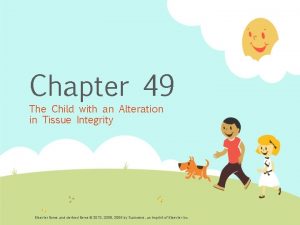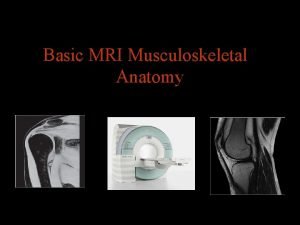Chapter 50 The Child with a Musculoskeletal Alteration




























- Slides: 28

Chapter 50 The Child with a Musculoskeletal Alteration Elsevier items and derived items © 2013, 2009, 2005 by Saunders, an imprint of Elsevier Inc.

Immobilizing Devices Splints Casts Traction Skin Ø Skeletal Ø External fixation devices Elsevier items and derived items © 2013, 2009, 2005 by Saunders, an imprint of Elsevier Inc. 2

Elsevier items and derived items © 2013, 2009, 2005 by Saunders, an imprint of Elsevier Inc. 3

Elsevier items and derived items © 2013, 2009, 2005 by Saunders, an imprint of Elsevier Inc. 4

Elsevier items and derived items © 2013, 2009, 2005 by Saunders, an imprint of Elsevier Inc. 5

Neurovascular Assessment Skin color Capillary refill time Temperature Sensation Movement of digits Pulse distal to the site Elsevier items and derived items © 2013, 2009, 2005 by Saunders, an imprint of Elsevier Inc. 6

Evaluation of Neurovascular Status The Five Ps of ischemia Pain Ø Pallor Ø Pulselessness Ø Paresthesia Ø Paralysis Ø NOTE: Pain or a burning sensation may indicate tissue ischemia. Prompt intervention is crucial and requires referral to the physician. Elsevier items and derived items © 2013, 2009, 2005 by Saunders, an imprint of Elsevier Inc. 7

Consequences of Immobility Alterations in systems Integumentary Ø Gastrointestinal Ø Genitourinary Ø Respiratory Ø Musculoskeletal Ø Growth and development Ø Elsevier items and derived items © 2013, 2009, 2005 by Saunders, an imprint of Elsevier Inc. 8

Fractures Trauma Ø Increased mobility puts young children at risk. • Inadequate motor and cognitive skills • Frequent falls Nonaccidental trauma Ø Evaluate for child abuse. Elsevier items and derived items © 2013, 2009, 2005 by Saunders, an imprint of Elsevier Inc. 9

Elsevier items and derived items © 2013, 2009, 2005 by Saunders, an imprint of Elsevier Inc. 10

Treatment of Fractures Reduction Ø Repositioning of the bone fragments into normal alignment Retention Once aligned to the fracture site must be protected Ø Application of splint, cast, traction, or external fixator Ø Elsevier items and derived items © 2013, 2009, 2005 by Saunders, an imprint of Elsevier Inc. 11

Question Kristin, age 10, sustained a fracture in the epiphyseal plate of her right fibula when she fell out of a tree. When discussing this injury with her parents, what should the nurse consider? Healing is usually delayed in this type of fracture. B. Bone growth can be affected by this type of fracture. C. This is an unusual fracture site in young children. D. This type of fracture is inconsistent with a fall. A. Elsevier items and derived items © 2013, 2009, 2005 by Saunders, an imprint of Elsevier Inc. 12

Soft Tissue Injuries Sprains Strains Contusions Dislocation Elsevier items and derived items © 2013, 2009, 2005 by Saunders, an imprint of Elsevier Inc. 13

Treatment of Soft Tissue Injuries: RICE and ICES R= I = C= E= rest ice compression elevation I = C= E= S= ice compression elevation support Elsevier items and derived items © 2013, 2009, 2005 by Saunders, an imprint of Elsevier Inc. 14

Osteomyelitis Bacterial infection of the bone Nursing care Assessment and documentation of the child's status Ø Pain management Ø Administration of antibiotics without iatrogenic injury Ø Elsevier items and derived items © 2013, 2009, 2005 by Saunders, an imprint of Elsevier Inc. 15

Musculoskeletal Developmental Disorders Scoliosis Limb differences Developmental dysplasia of the hip Legg-Calvé-Perthes disease Slipped capital femoral epiphysis Clubfoot Elsevier items and derived items © 2013, 2009, 2005 by Saunders, an imprint of Elsevier Inc. 16

Elsevier items and derived items © 2013, 2009, 2005 by Saunders, an imprint of Elsevier Inc. 17

Elsevier items and derived items © 2013, 2009, 2005 by Saunders, an imprint of Elsevier Inc. 18

Elsevier items and derived items © 2013, 2009, 2005 by Saunders, an imprint of Elsevier Inc. 19

Elsevier items and derived items © 2013, 2009, 2005 by Saunders, an imprint of Elsevier Inc. 20

Elsevier items and derived items © 2013, 2009, 2005 by Saunders, an imprint of Elsevier Inc. 21

Therapeutic Management Each condition often requires long-term treatment including the following: Splinting Ø Traction Ø Bracing Ø Casting Ø A combination of the above Ø Elsevier items and derived items © 2013, 2009, 2005 by Saunders, an imprint of Elsevier Inc. 22

Elsevier items and derived items © 2013, 2009, 2005 by Saunders, an imprint of Elsevier Inc. 23

Elsevier items and derived items © 2013, 2009, 2005 by Saunders, an imprint of Elsevier Inc. 24

Elsevier items and derived items © 2013, 2009, 2005 by Saunders, an imprint of Elsevier Inc. 25

Elsevier items and derived items © 2013, 2009, 2005 by Saunders, an imprint of Elsevier Inc. 26

The Child with Muscular Dystrophy Nursing outcomes Maintaining physical activity Ø Promoting respiratory function Ø Managing weight Ø Reducing the impact of the disease on the child's development Ø Elsevier items and derived items © 2013, 2009, 2005 by Saunders, an imprint of Elsevier Inc. 27

Juvenile Idiopathic Arthritis Nursing outcomes Keeping the child free from injury Ø Controlling pain Ø Enhancing physical mobility Ø Promoting age-appropriate developmental behaviors Ø Elsevier items and derived items © 2013, 2009, 2005 by Saunders, an imprint of Elsevier Inc. 28
 Chapter 46 the child with a cardiovascular alteration
Chapter 46 the child with a cardiovascular alteration Buck's extension traction
Buck's extension traction The musculoskeletal system chapter 21
The musculoskeletal system chapter 21 Chapter 6 musculoskeletal system
Chapter 6 musculoskeletal system Chapter 15 musculoskeletal system step by step
Chapter 15 musculoskeletal system step by step Chapter 40 musculoskeletal care modalities
Chapter 40 musculoskeletal care modalities Alterations in various aspects of society overtime
Alterations in various aspects of society overtime Permanent
Permanent Internal reconstruction mens
Internal reconstruction mens Lig flavum
Lig flavum Faa 337 form
Faa 337 form Alteration of food
Alteration of food Faktor faktor yang mempengaruhi perubahan
Faktor faktor yang mempengaruhi perubahan เปล
เปล Alteration and reduction of share capital
Alteration and reduction of share capital Maigreur constitutionnelle et fatigue
Maigreur constitutionnelle et fatigue Chemical alteration definition
Chemical alteration definition Alterations in urinary elimination
Alterations in urinary elimination Unauthorised alterations to common property
Unauthorised alterations to common property Types of joint movement
Types of joint movement Unit 41 musculoskeletal system
Unit 41 musculoskeletal system Musculoskeletal system
Musculoskeletal system Musculoskeletal icd 10 codes
Musculoskeletal icd 10 codes Kode icd 10 osteoarthritis genu
Kode icd 10 osteoarthritis genu Musculoskeletal fitness assessment
Musculoskeletal fitness assessment Work related musculoskeletal disorders definition
Work related musculoskeletal disorders definition Musculoskeletal pronounce
Musculoskeletal pronounce Medical term for top of foot
Medical term for top of foot Diseases of the musculoskeletal system
Diseases of the musculoskeletal system
